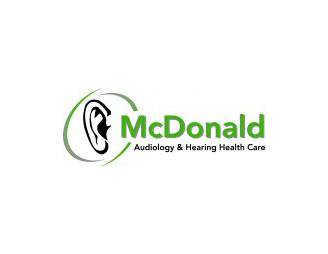Sometimes, it seems like we love to deceive ourselves. Wikipedia has an article named “List of common misconceptions” that consists of hundreds of widely-held but false beliefs. Yes, I understand it’s Wikipedia, but take a look at the bottom of the web page and you’ll see approximately 385 references to credible sources.
For example, did you know that Thomas Edison didn’t invent the lightbulb? Or that sugar does not actually make kids hyperactive? There are a multitude of examples of beliefs that we simply assume to be correct, but now and then, it’s a good idea to reassess what we think we know.
For many of us, it’s time to reexamine what we think we know about hearing aids. Most myths and misconceptions about hearing aids are founded on the problems associated with the older analog hearing aid models. But considering the majority of hearing aids are now digital, those problems are a thing of the past.
So how up-to-date is your hearing aid knowledge? Read below to see if any of the top 5 myths are stopping you or someone you know from buying a hearing aid.
The Top 5 Myths About Hearing Aids
Myth # 1: Hearing aids are not effective because some people have had bad experiences.
Reality: First, hearing aids have been proven to be highly effective. A study reported in the Journal of the American Medical Association comparing the performance of three popular types of hearing aids concluded that:
Each [hearing aid] circuit markedly improved speech recognition, with greater improvement observed for soft and conversationally loud speech….All 3 circuits significantly reduced the frequency of problems encountered in verbal communication….Each circuit provided significant benefit in quiet and noisy listening situations.
On top of that, since the publication of this research, hearing aid technology has continued to improve. So the question is not whether hearing aids perform well — the question is whether you have the right hearing aid for your hearing loss, professionally programmed based on to your preferences by a qualified professional.
Negative experiences are likely the result of selecting the wrong hearing aid, buying hearing aids online, consulting the wrong individual, or not having the hearing aids customized and professionally programmed.
Myth # 2: Hearing aids are big, cumbersome, and unsightly.
Reality: This one is particularly easy to disprove. Just do a quick Google image search for “attractive hearing aid designs” and you’ll see quite a few examples of sleek and colorful models from several producers.
Additionally, “completely-in-the-canal” (CIC) hearing aids are available that are virtually or entirely unseen when worn. The newer, attractive designs, however, compel some patients to choose the somewhat larger hearing aid models to showcase the technology.
Myth # 3: Hearing aids are too expensive.
Reality: Presently, some flat screen television sets with ultra-high definition curved glass sell for $8,000 or more. But this doesn’t make us say that “all TVs are too expensive.”
As with television sets, hearing aids range in cost based on performance and features. While you may not want — or need — the top of the line hearing aids, you can more than likely find a pair that fits your needs, preferences, and finances. Also be mindful that, as is the scenario with all electronics, hearing aids are becoming more affordable from year to year, and that the value of healthier hearing and a better life is usually worthy of the expense.
Myth # 4: You can save time and money buying hearing aids online.
Reality: Remember myth # 1 that asserted that hearing aids are not effective? Well, it was very likely brought about by by this myth. Like we stated before, hearing aids have been proven to be effective, but the one caution to that statement has always been that hearing aids have to be programmed by a professional to assure performance.
You wouldn’t dare buy a pair of prescription glasses on the web without contacting your eye doctor because your glasses need to be custom-made according to the unique characteristics of your vision loss. Buying hearing aids is exactly the same.
Sure, visiting a hearing specialist is more costly, but look at what you get for the price: you can be certain that you get the right hearing aid with the right fitting and settings, in addition to follow-up care, adjustments, cleanings, instructions, repair services, and more. It’s worth it.
Myth # 5: Hearing aids are uncomfortable and difficult to operate.
Reality: If this refers to analog hearing aids, then yes, it is mostly true. The thing is, practically all hearing aids are now digital.
Digital hearing aids dynamically process sound with a miniature computer chip so that you don’t have to be concerned about manual adjustments; in addition, some digital hearing aids can even be operated through your mobile phone. The bottom line: digital hearing aids are being manufactured with optimum ease-of-use in mind.
Your hearing specialist can also construct a custom mold for your hearing aids, ensuring a comfortable and proper fit. While a one-size-fits all hearing aid will probably be uncomfortable, a custom-fit hearing aid conforms to the curves of your ear.


I like what it said about having the right hearing aid for your hearing loss. It’s like a medication. Some medications may work better for other people’s conditions, while other ones may be good for you. I can also see how buying hearing aids online may not be the best idea. Everyone’s ears are shaped differently, so you have to have them fitted just right for you.